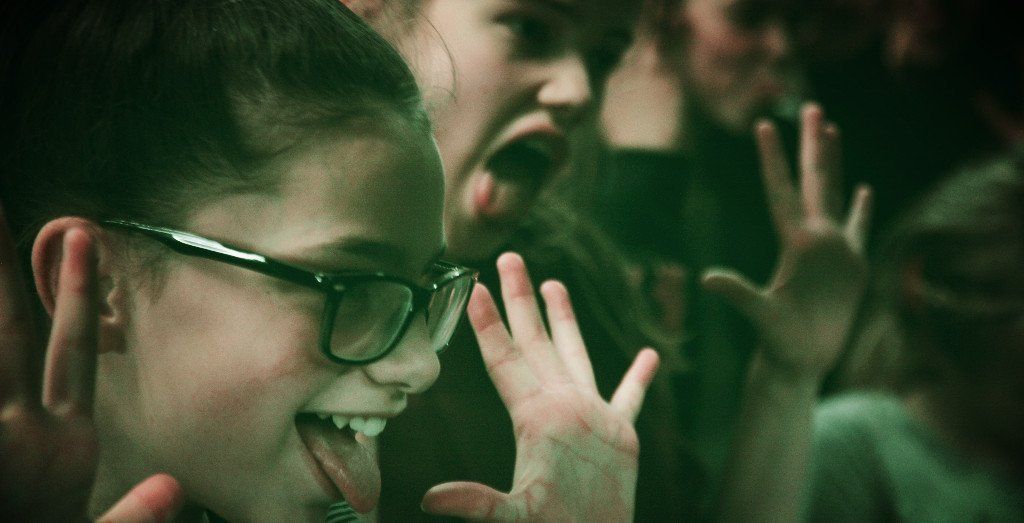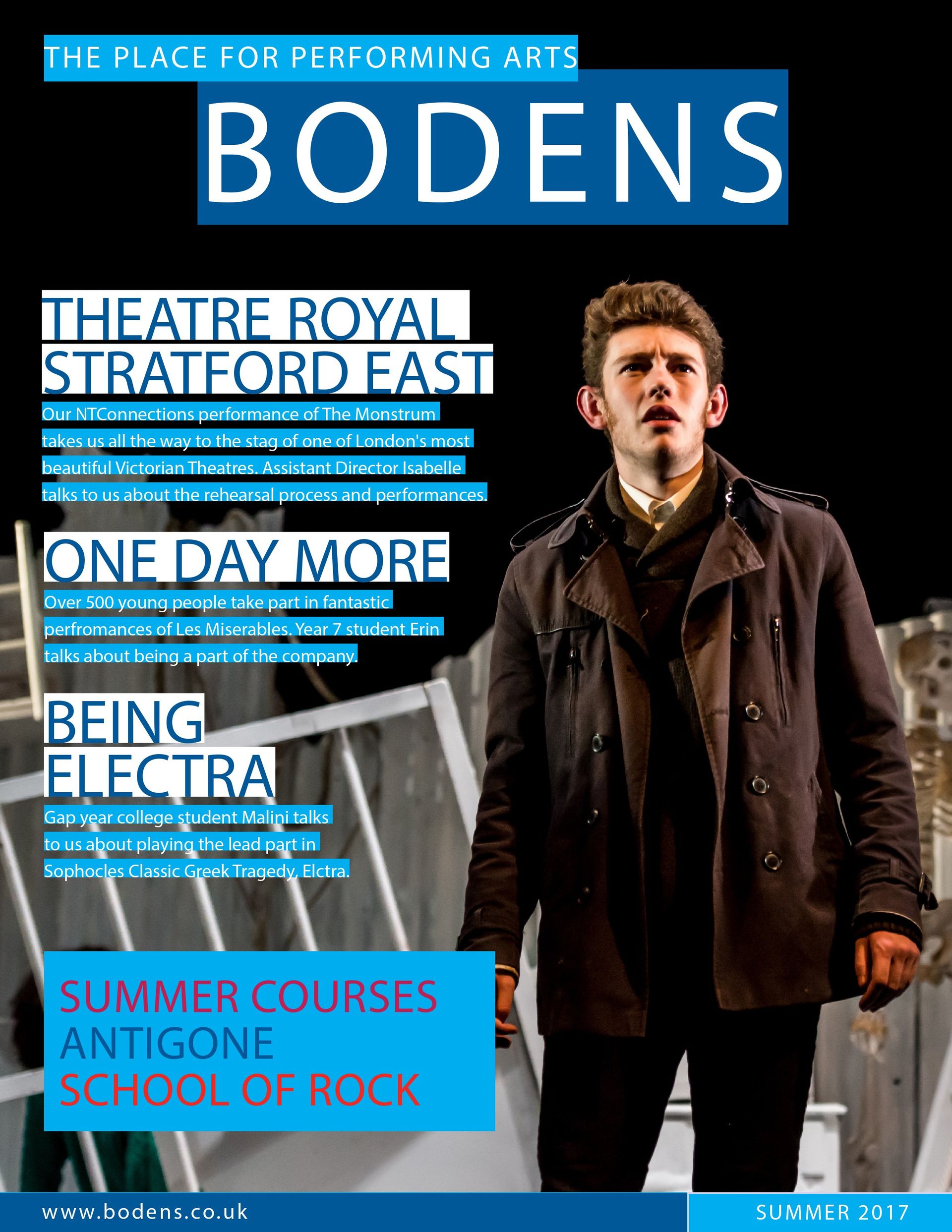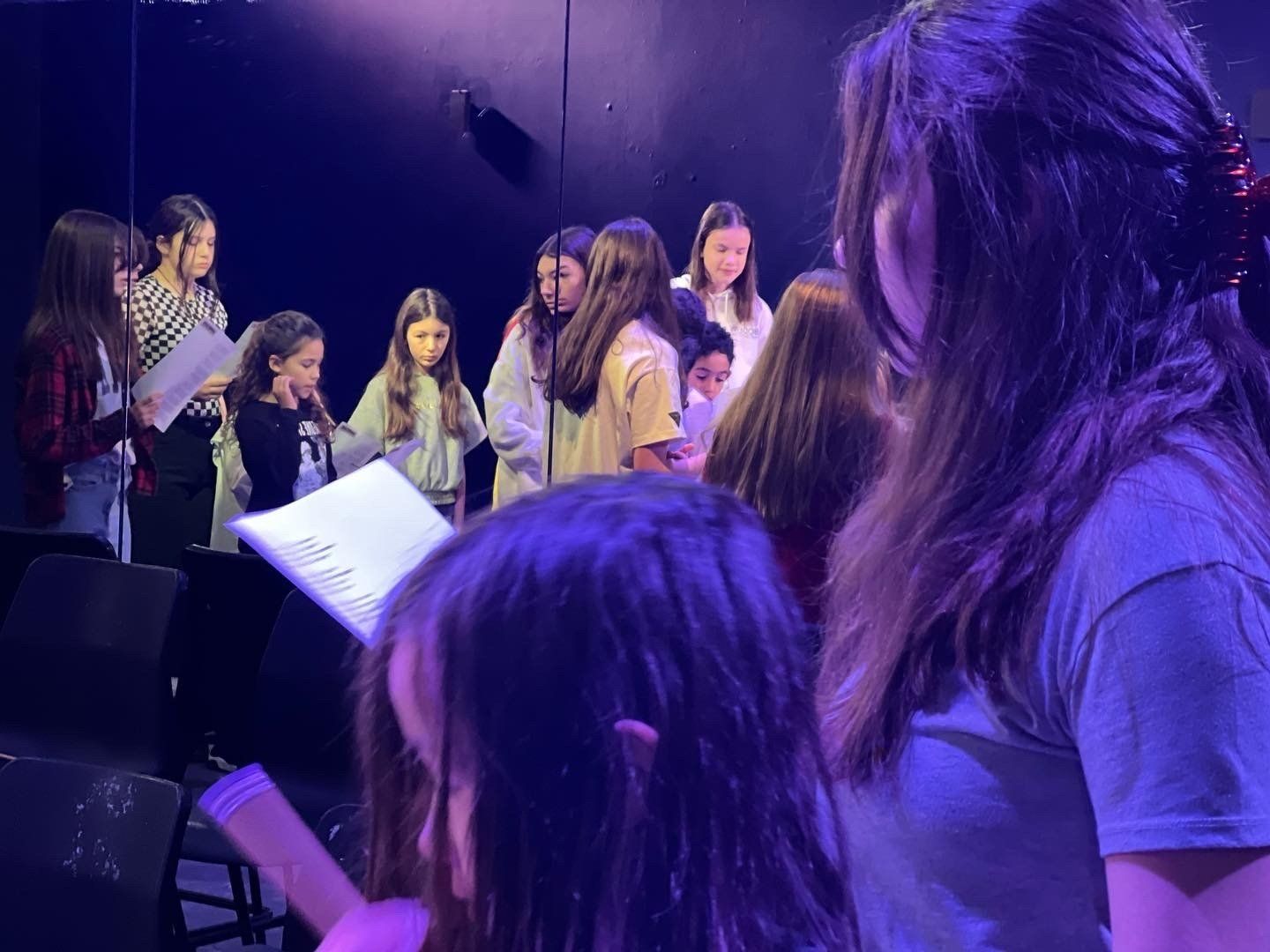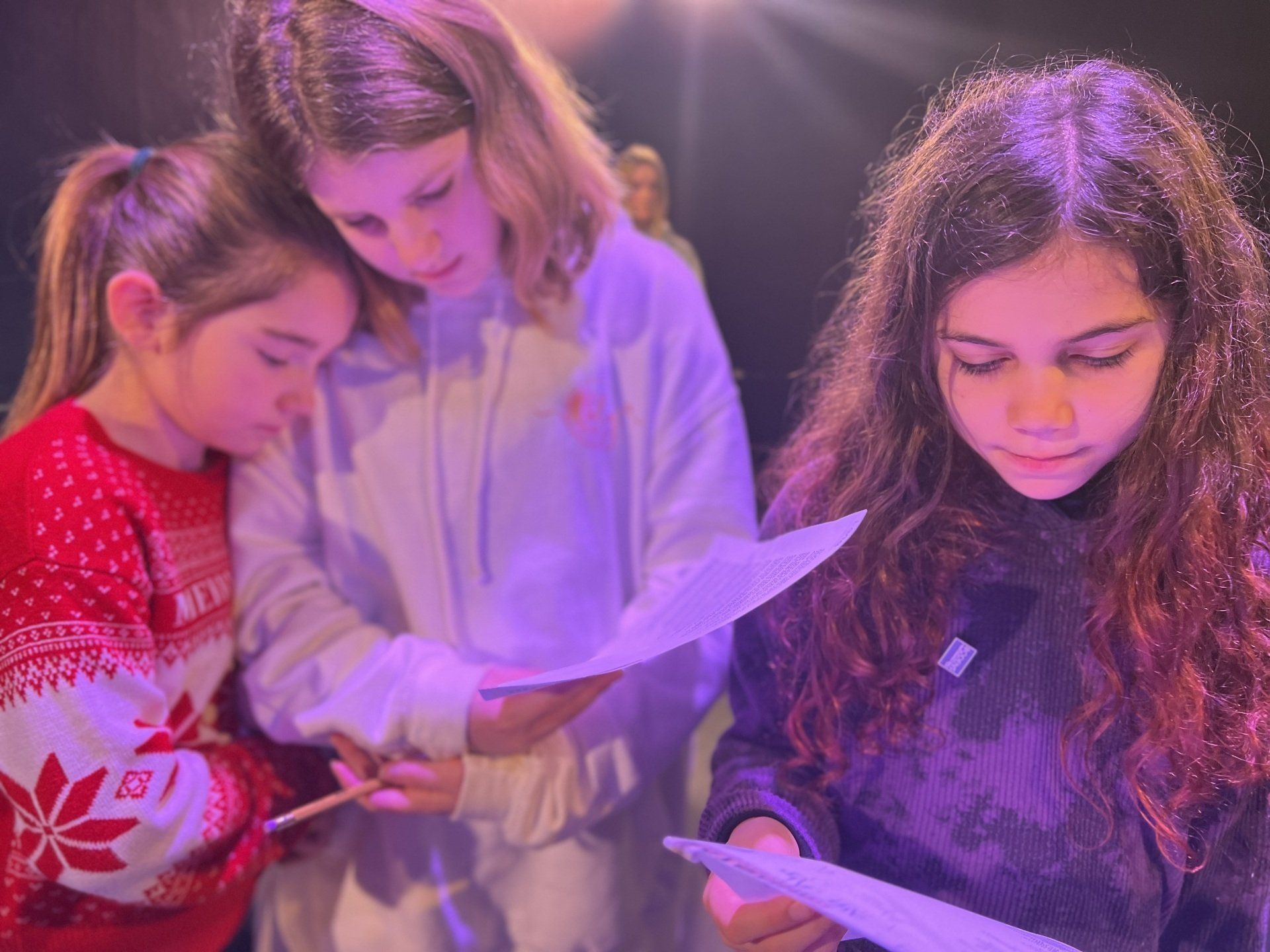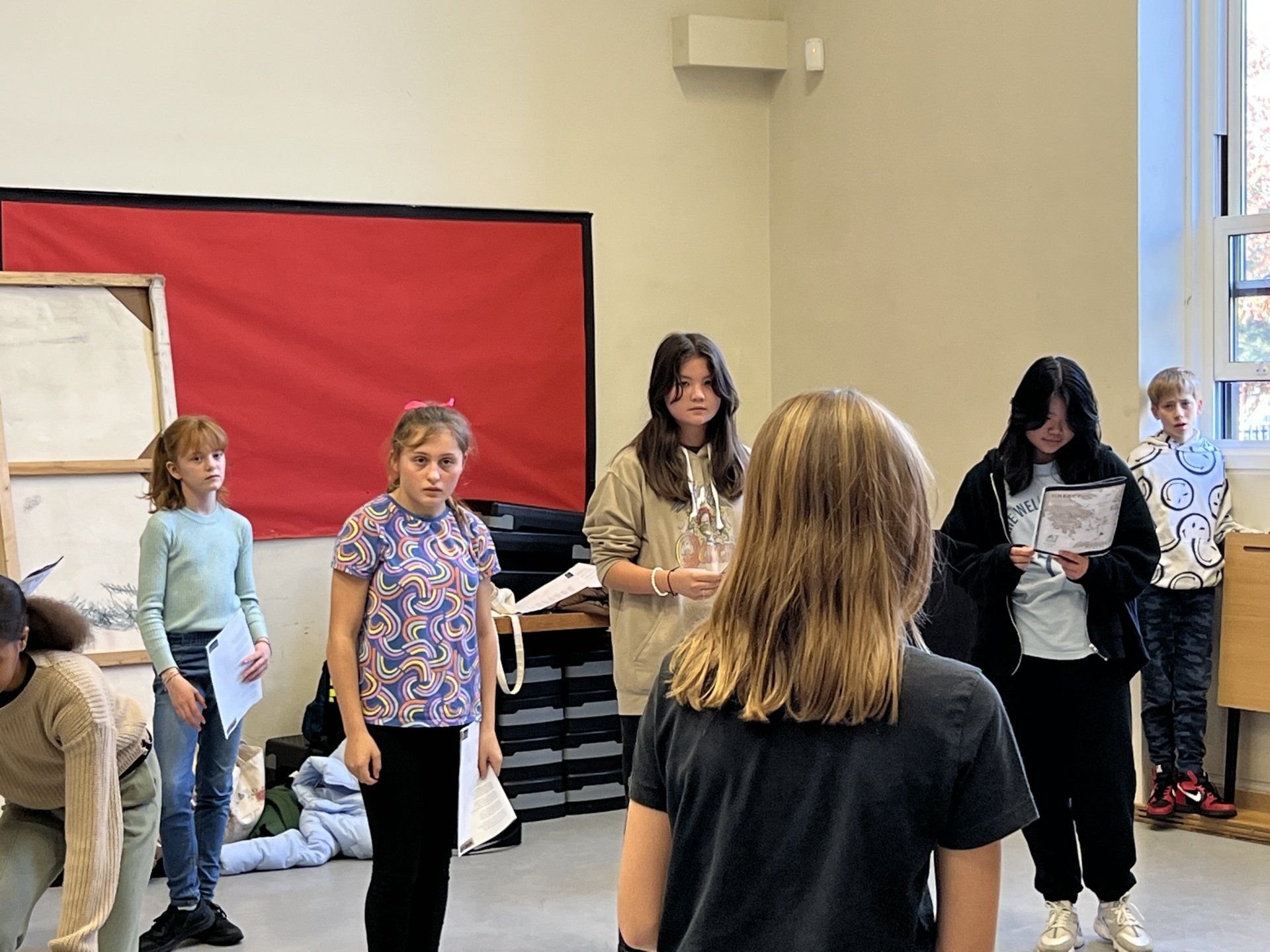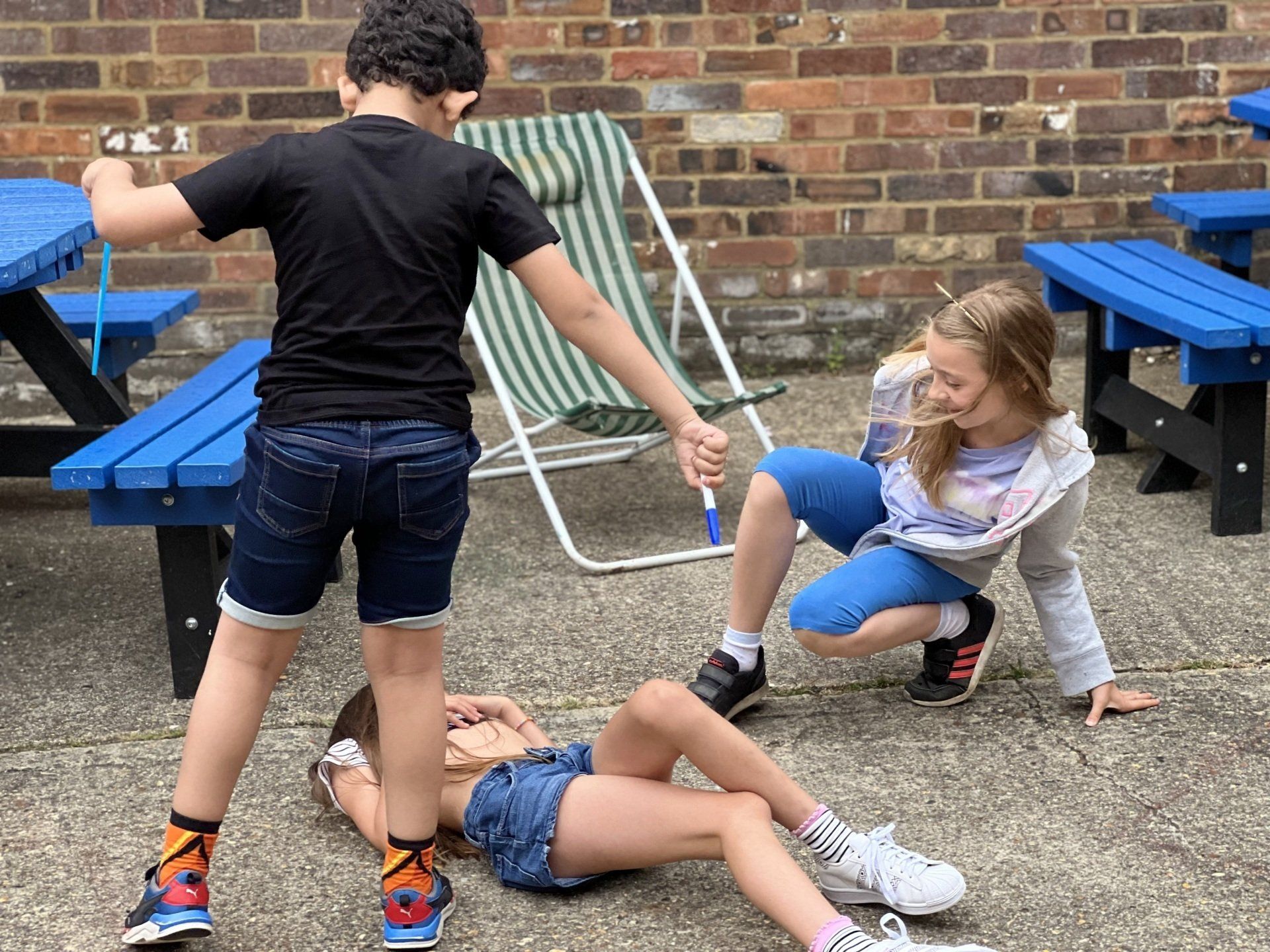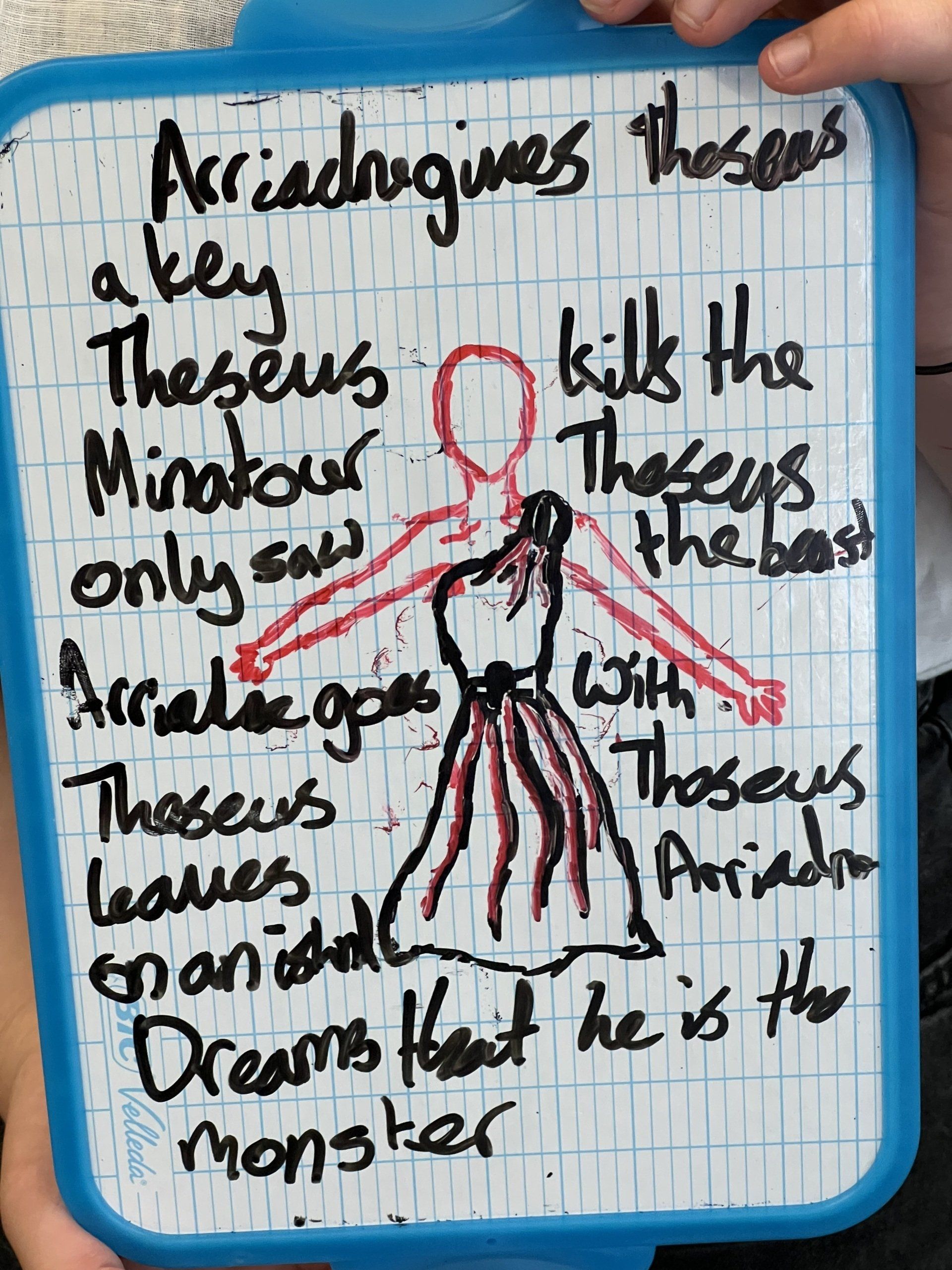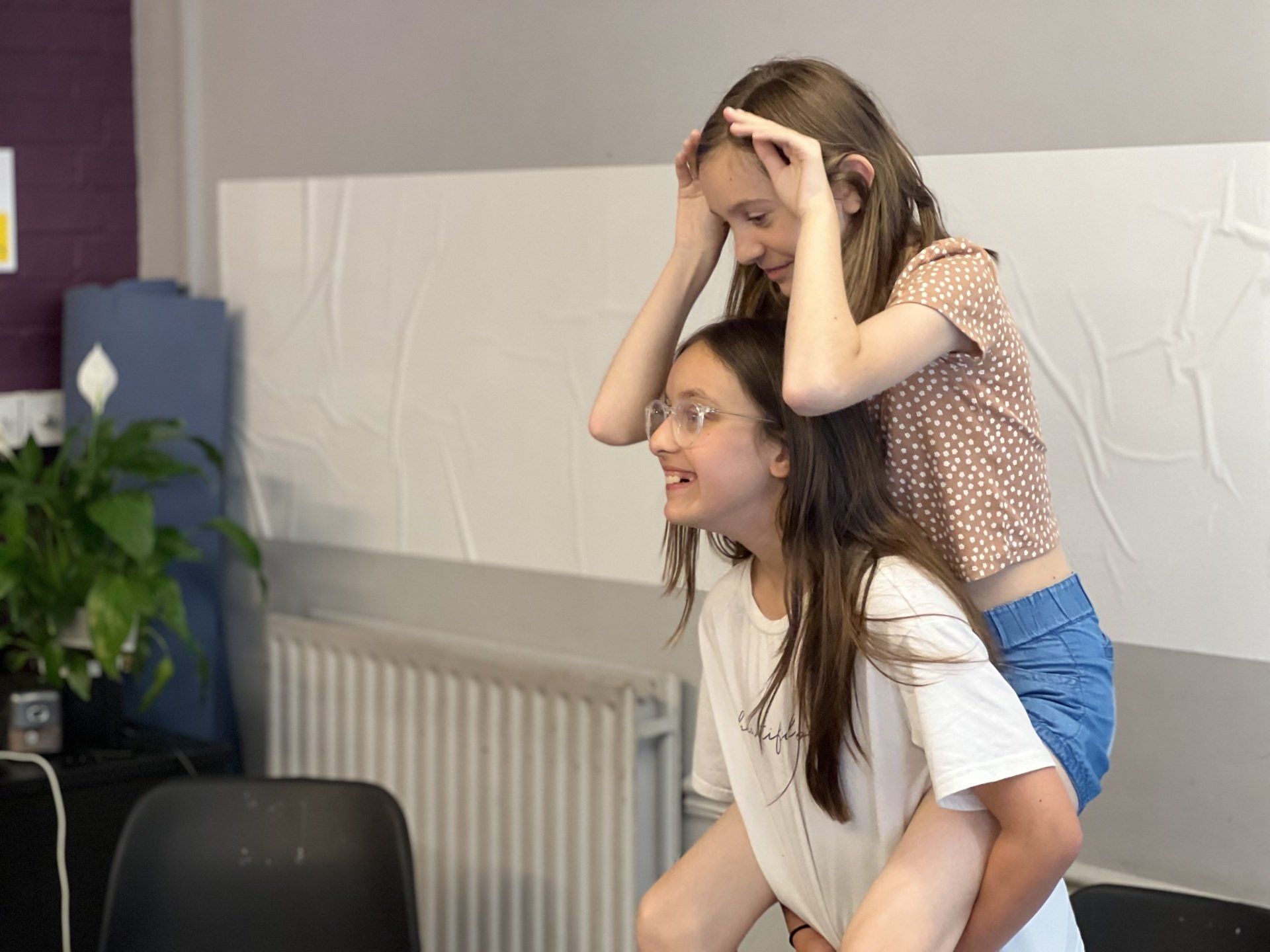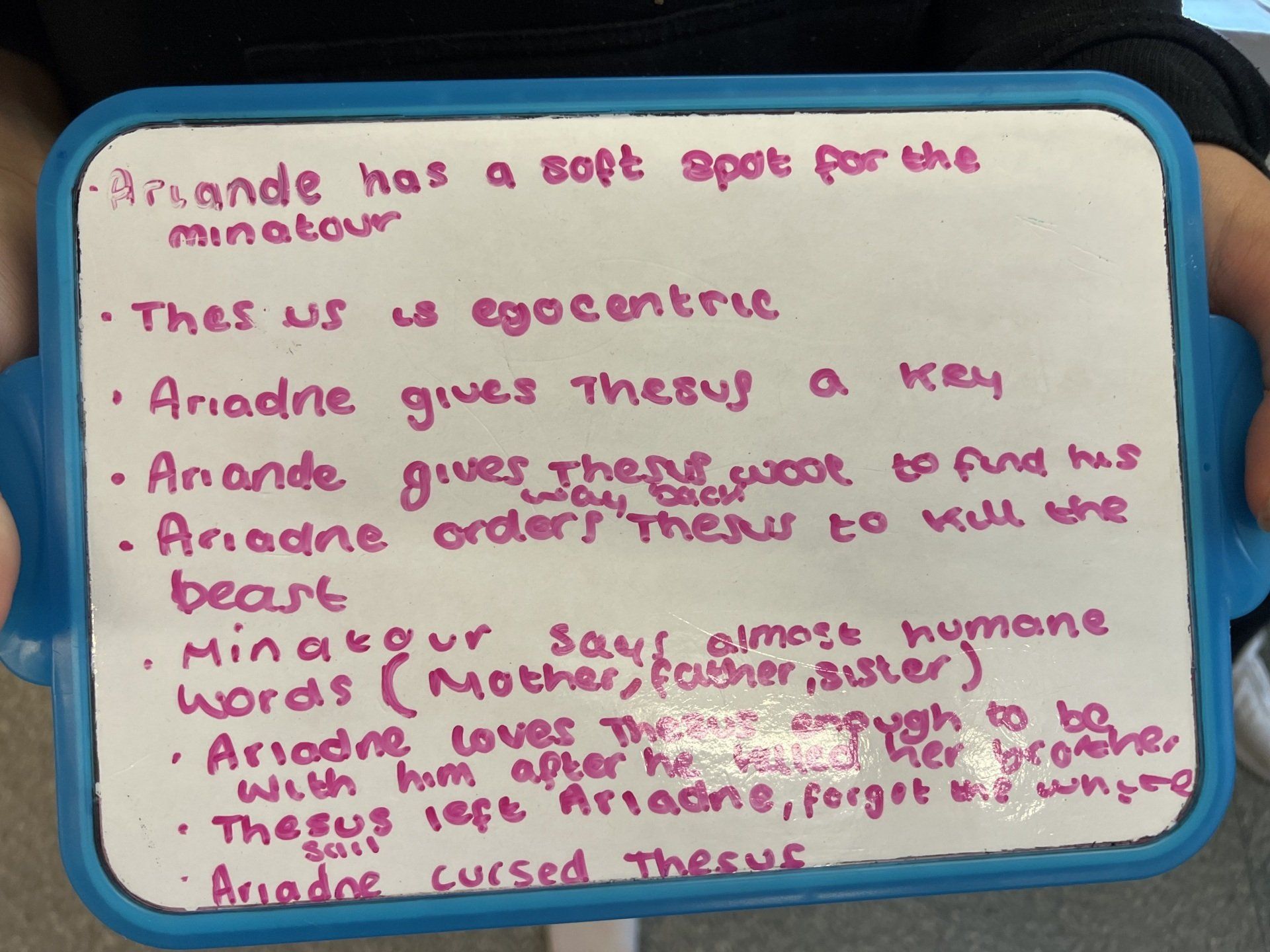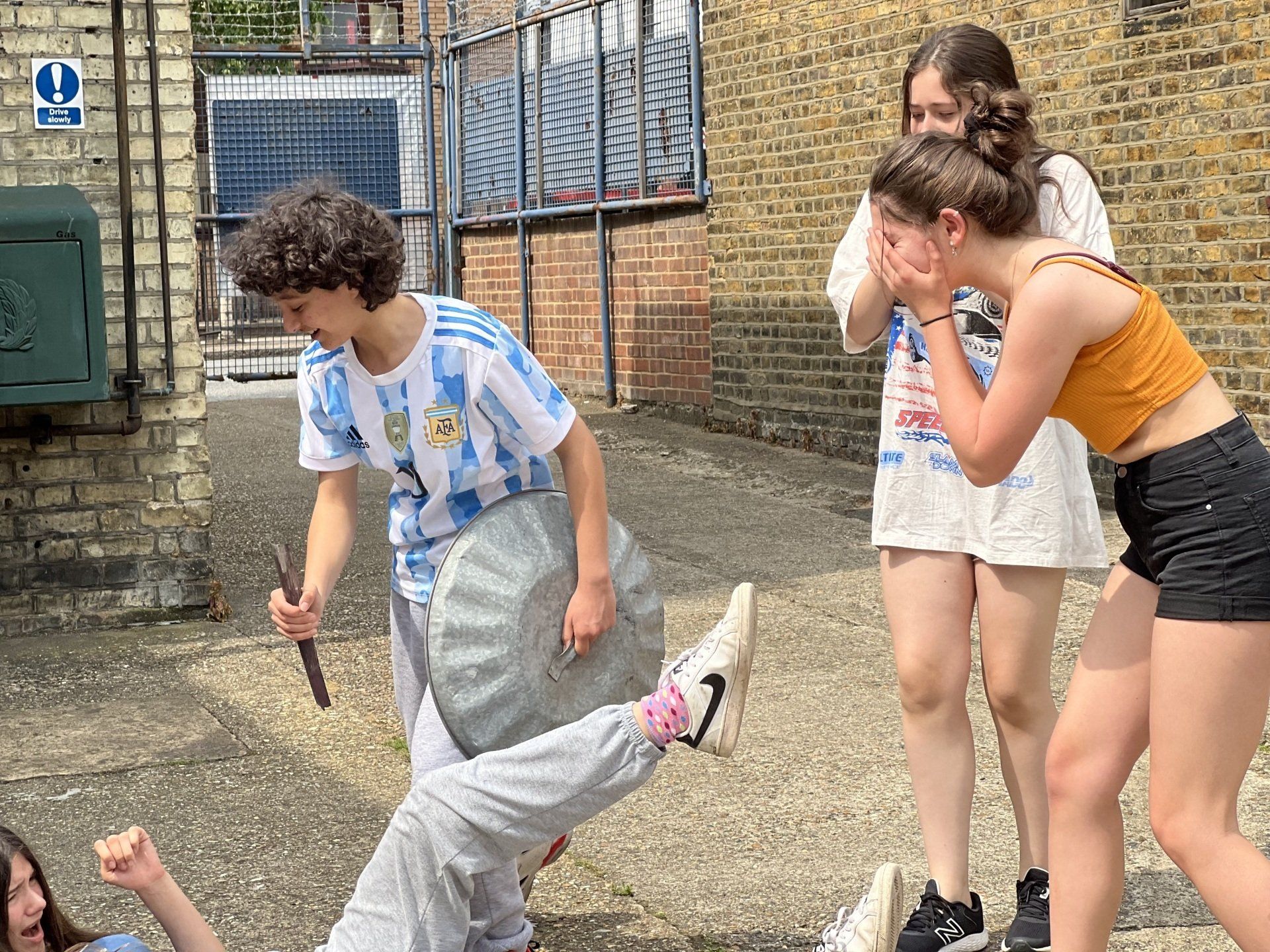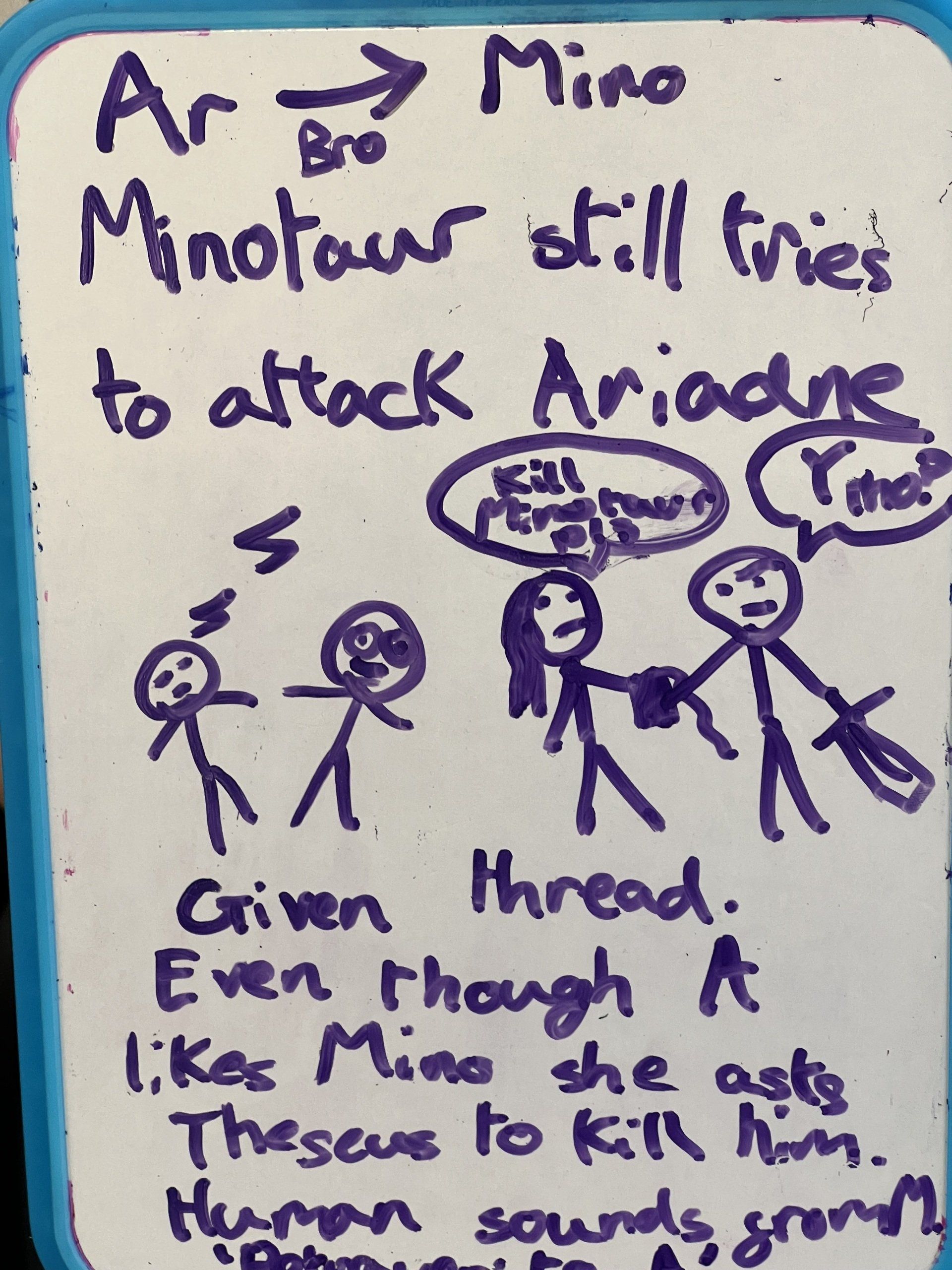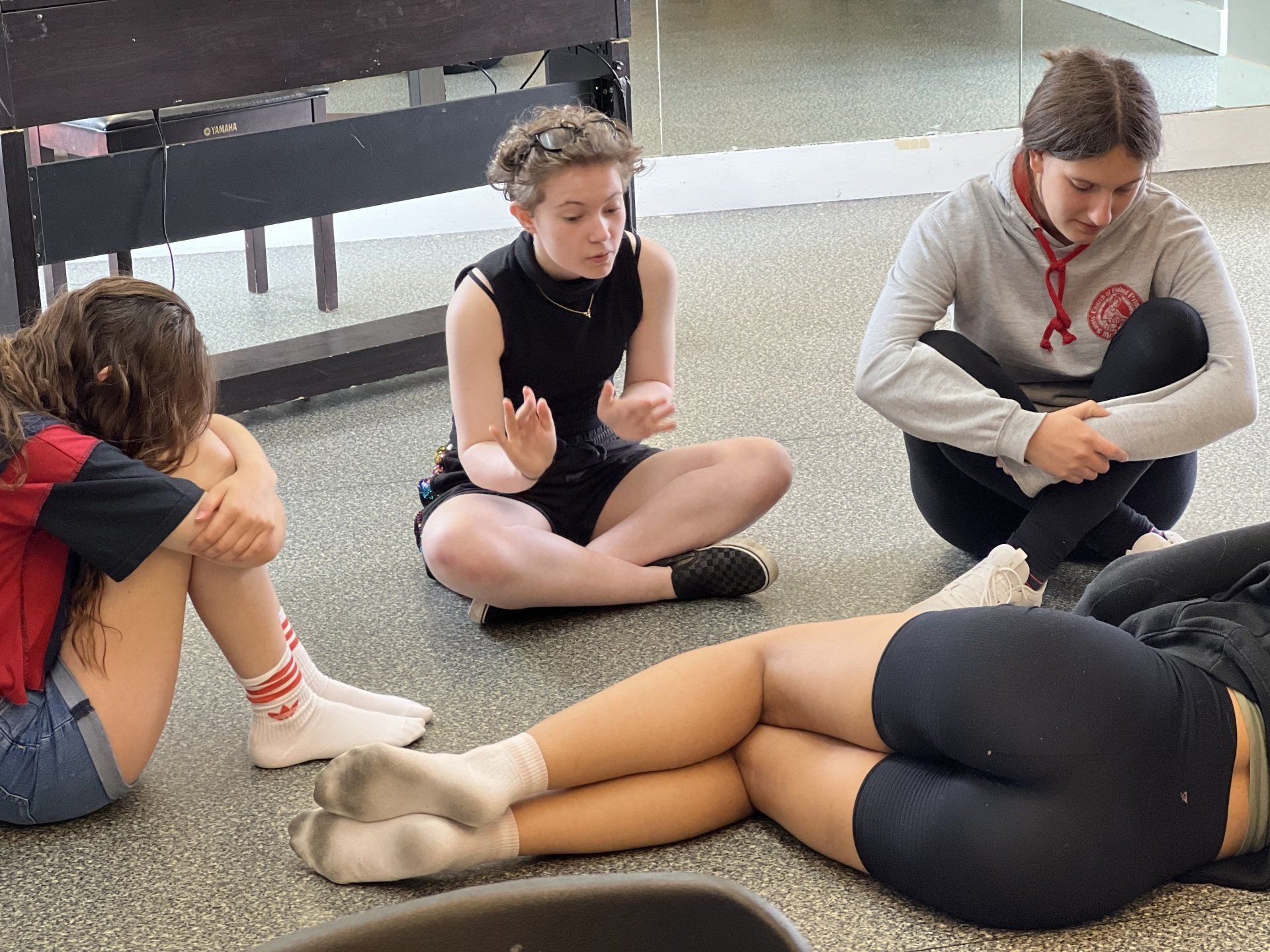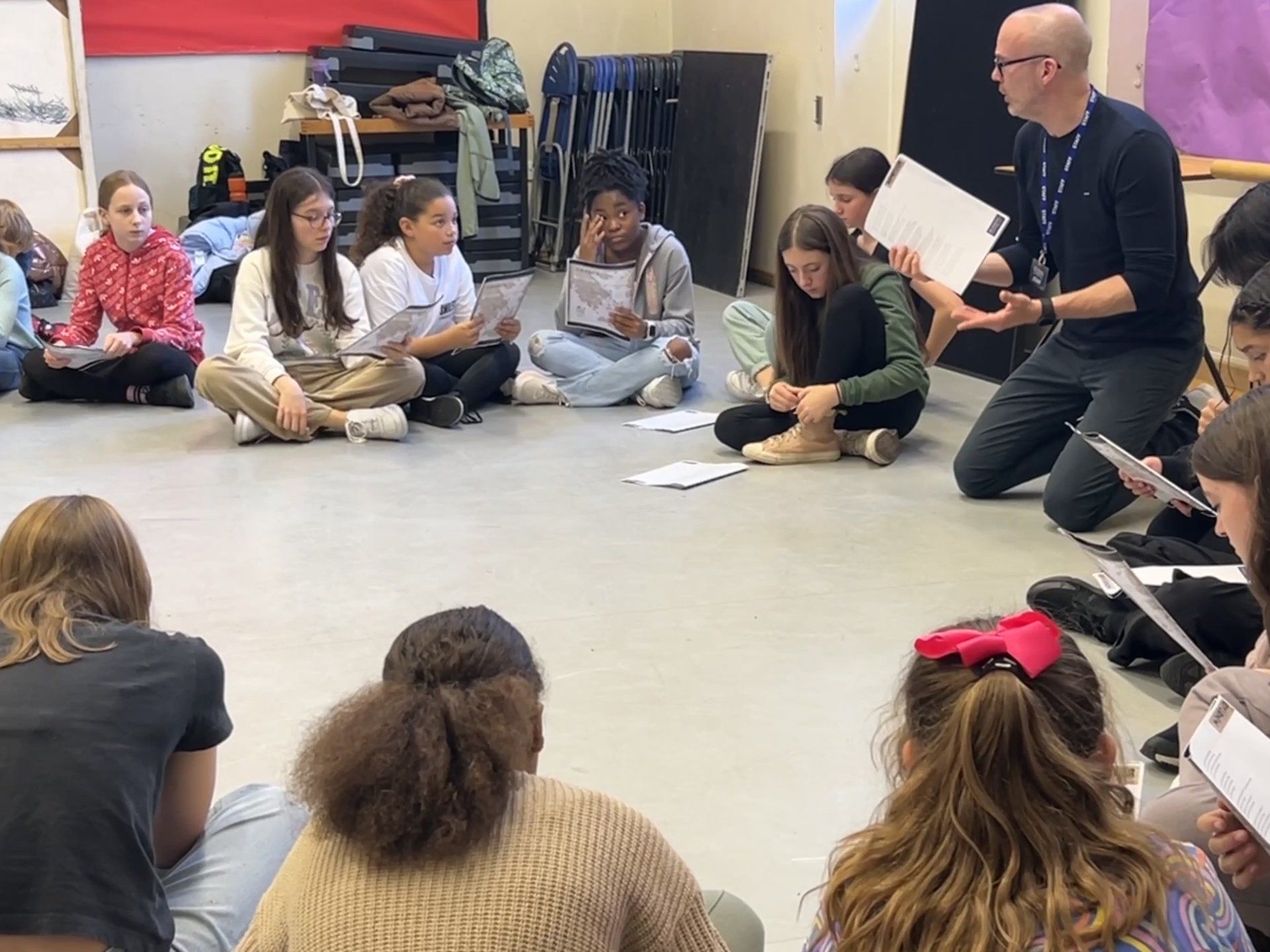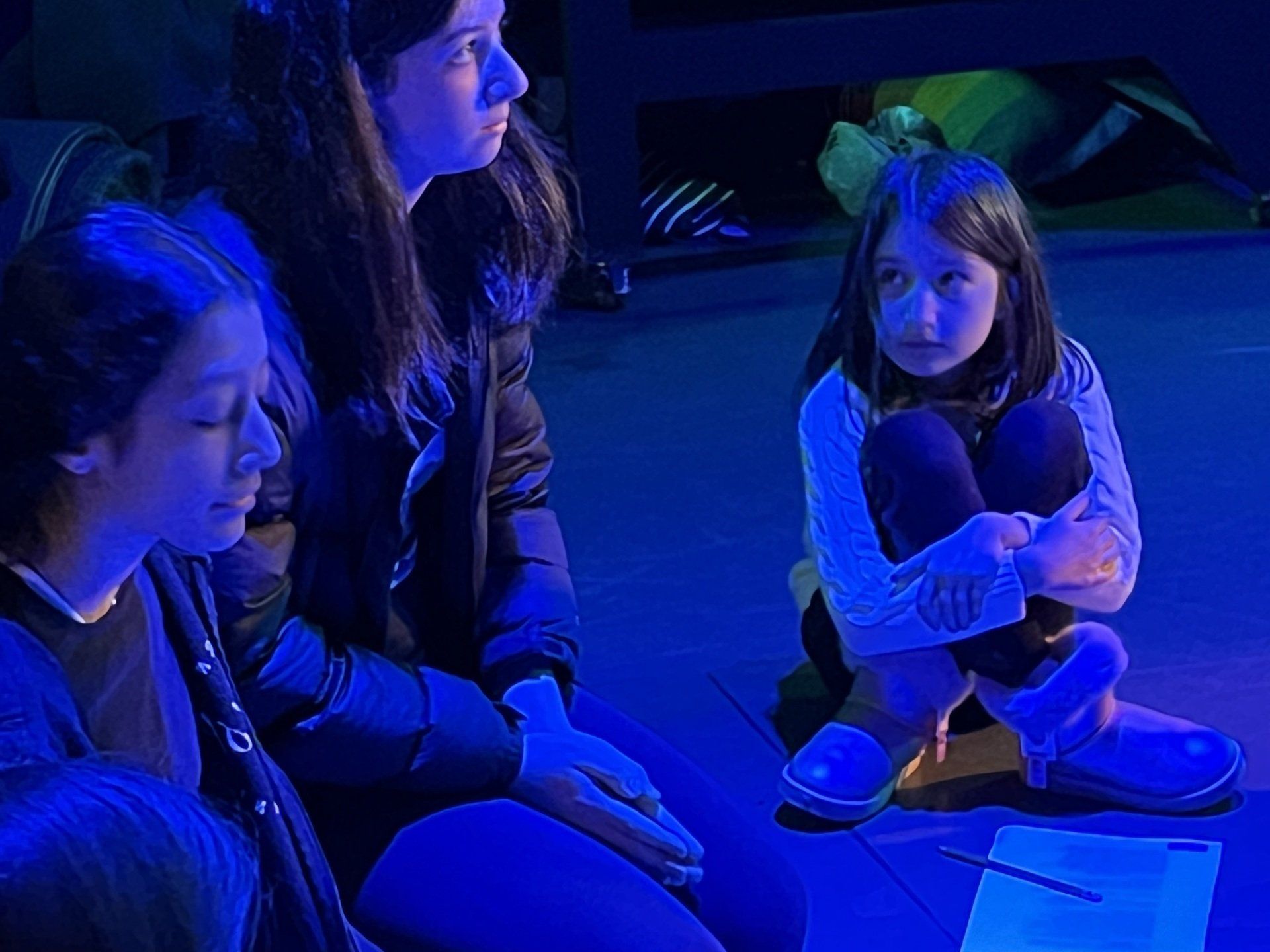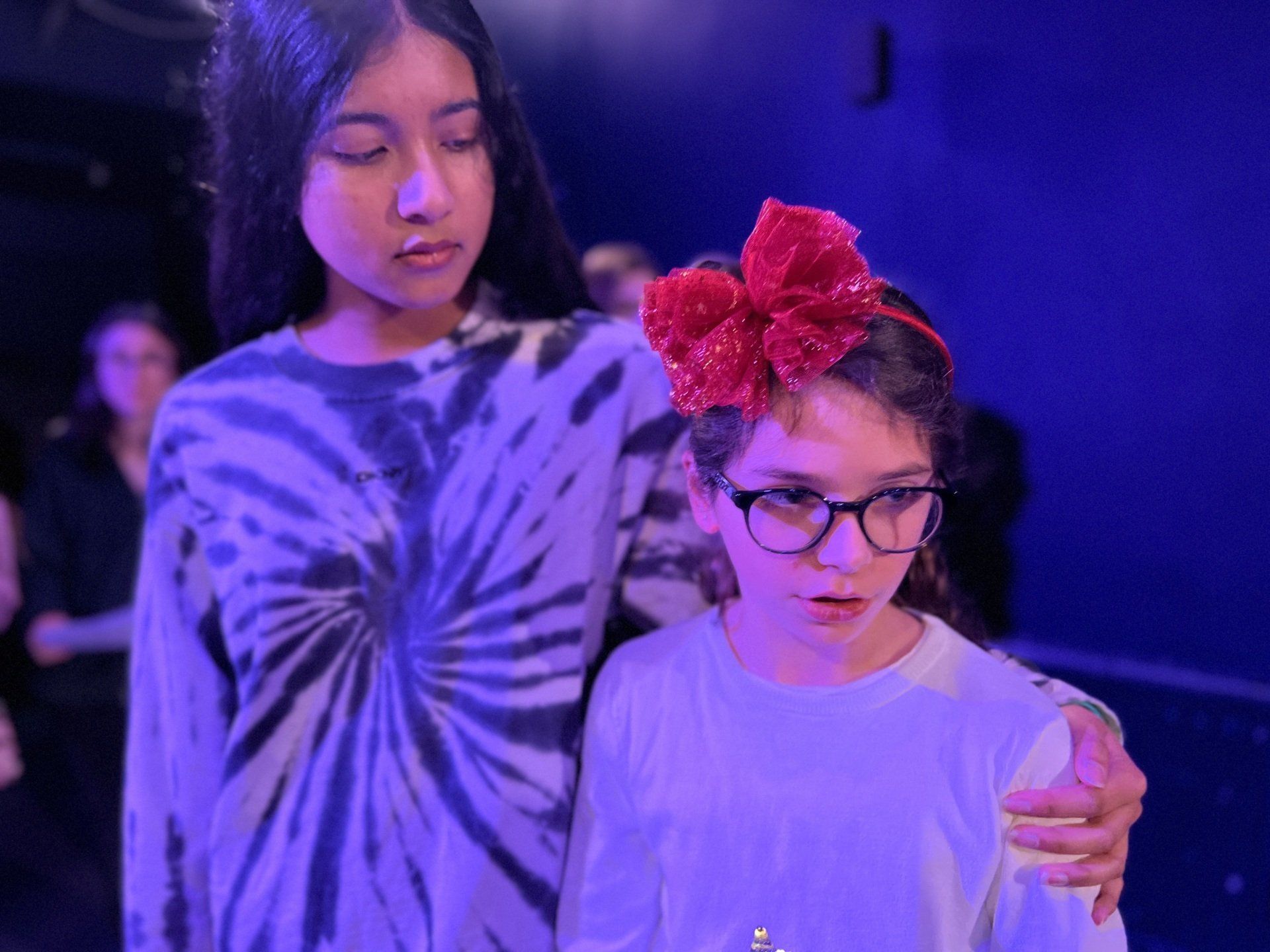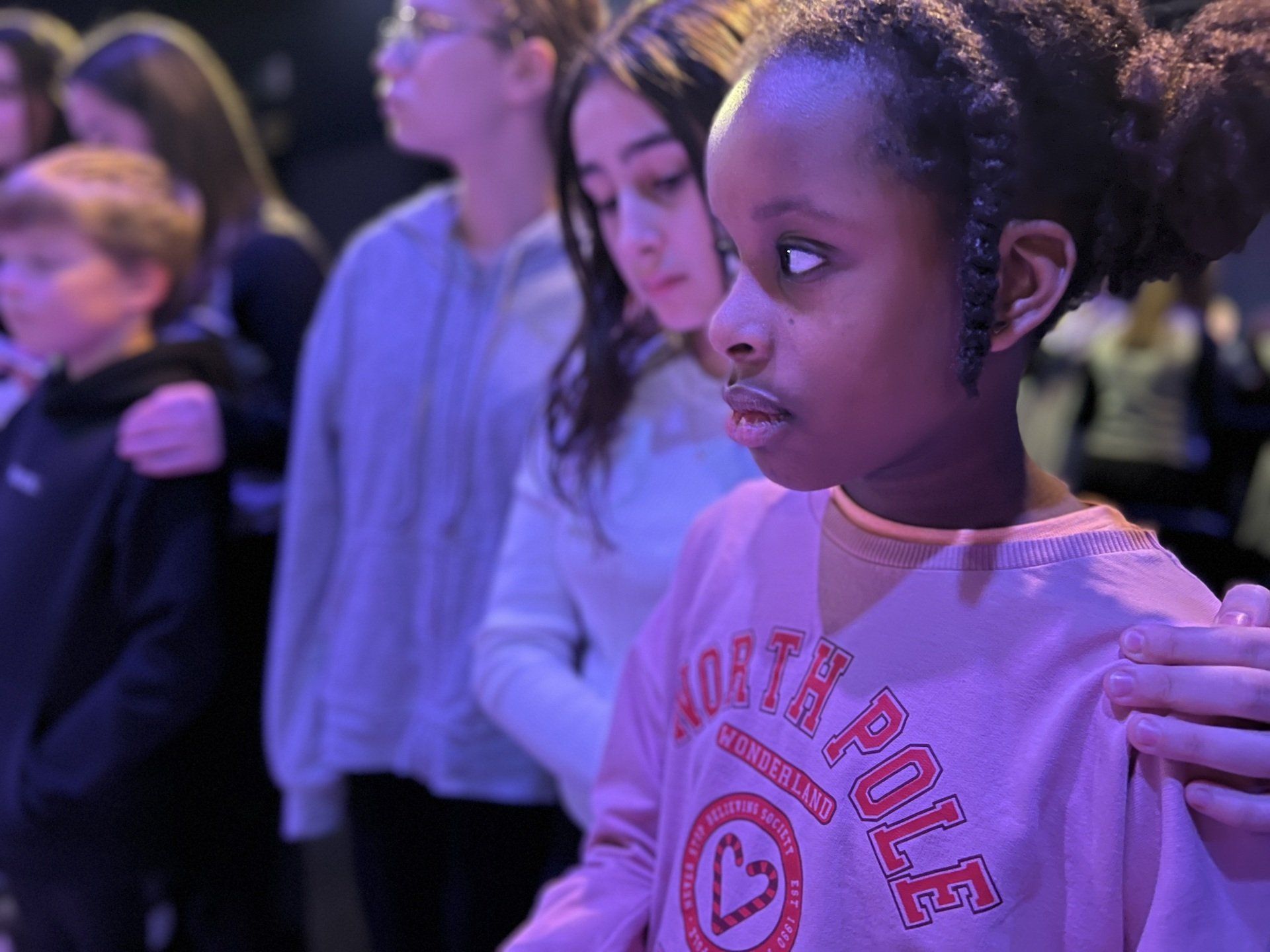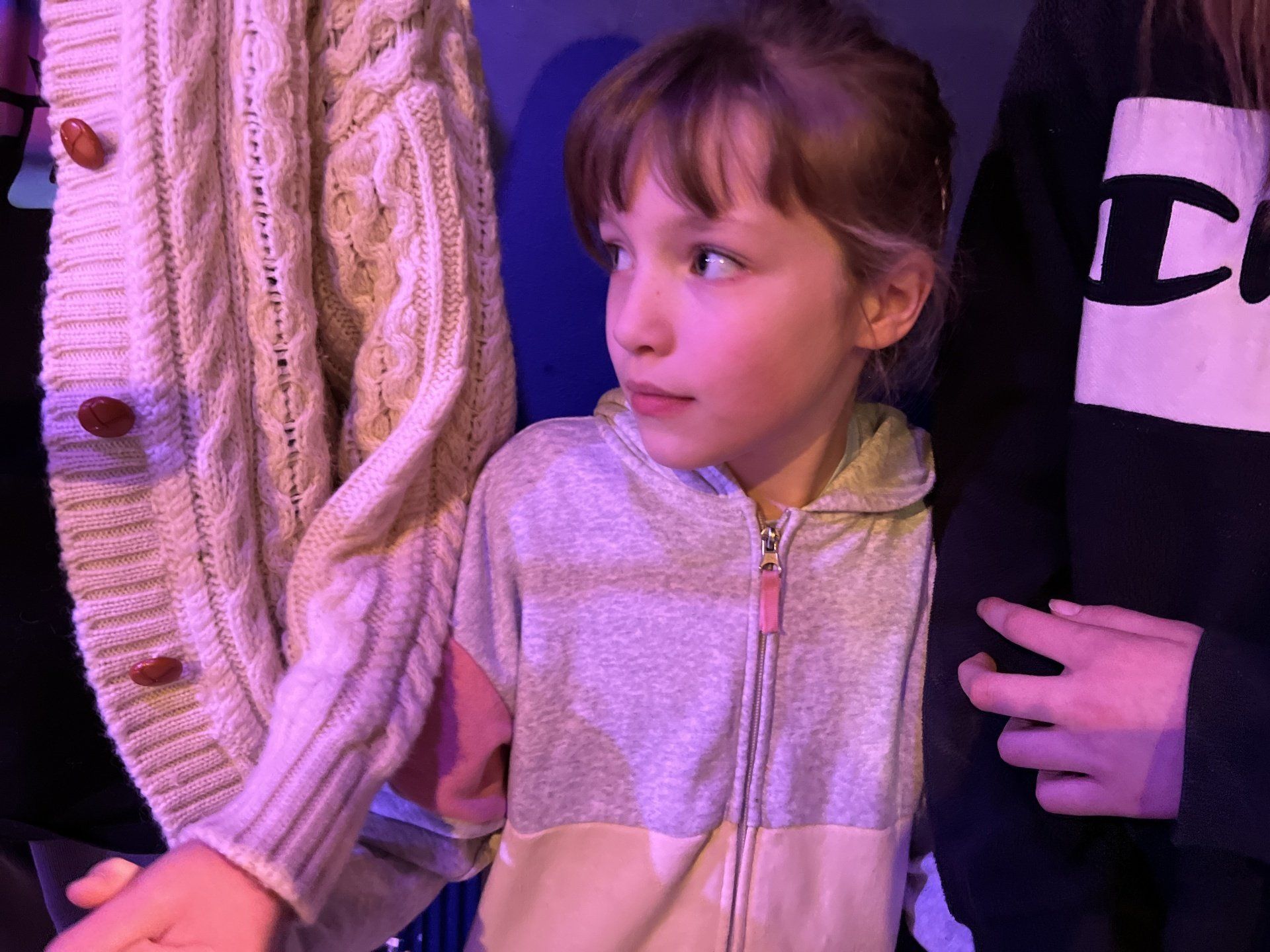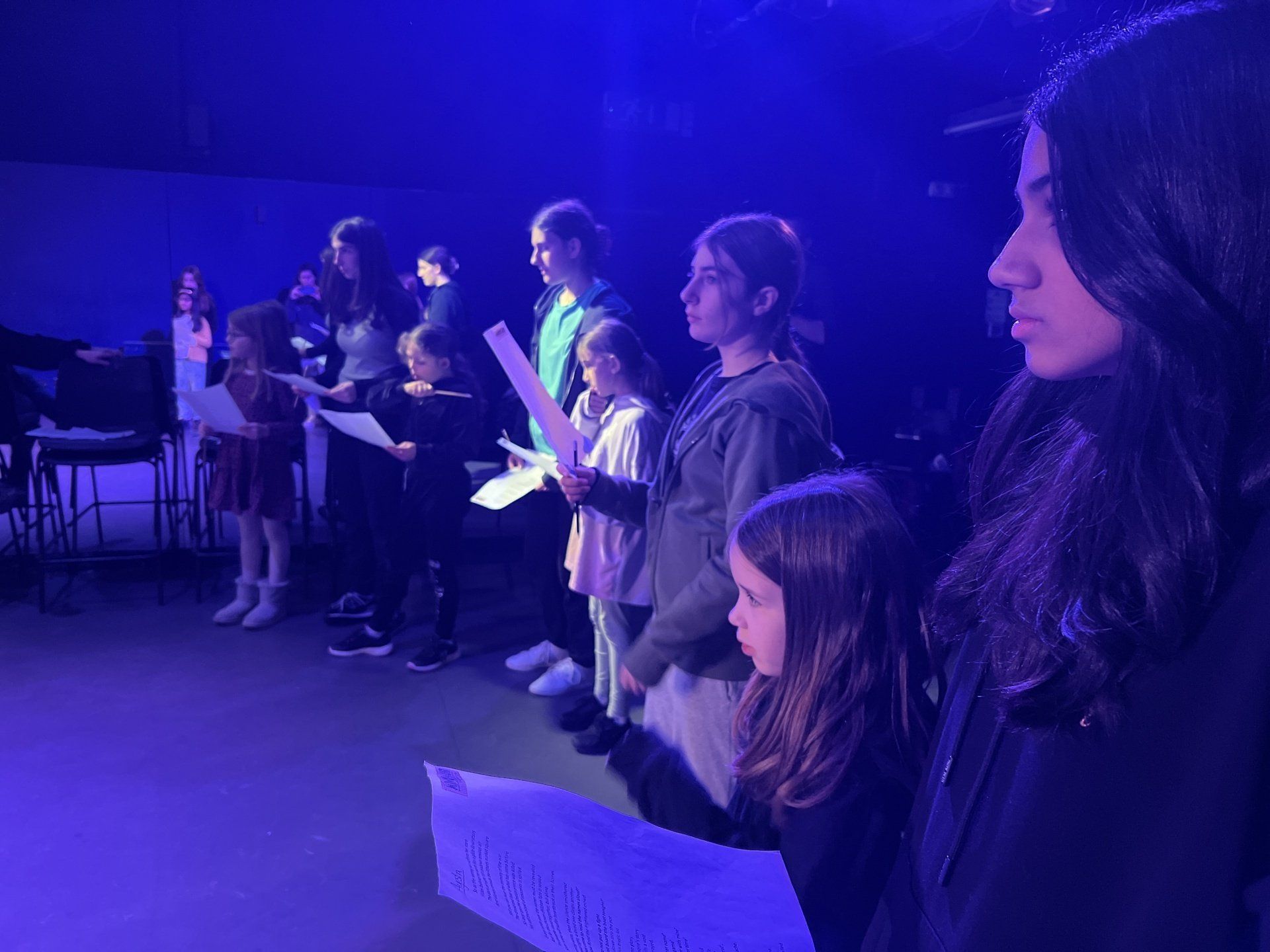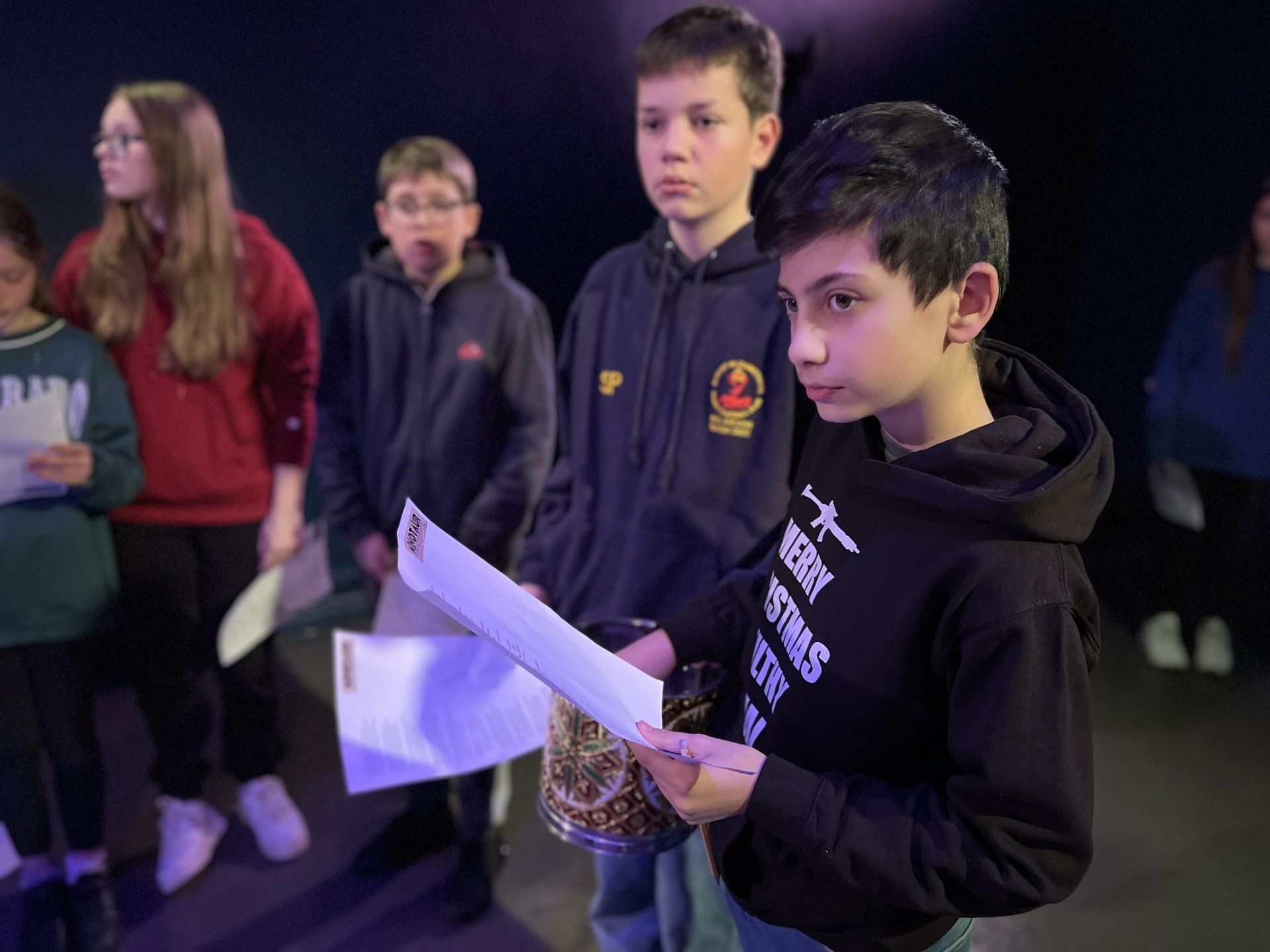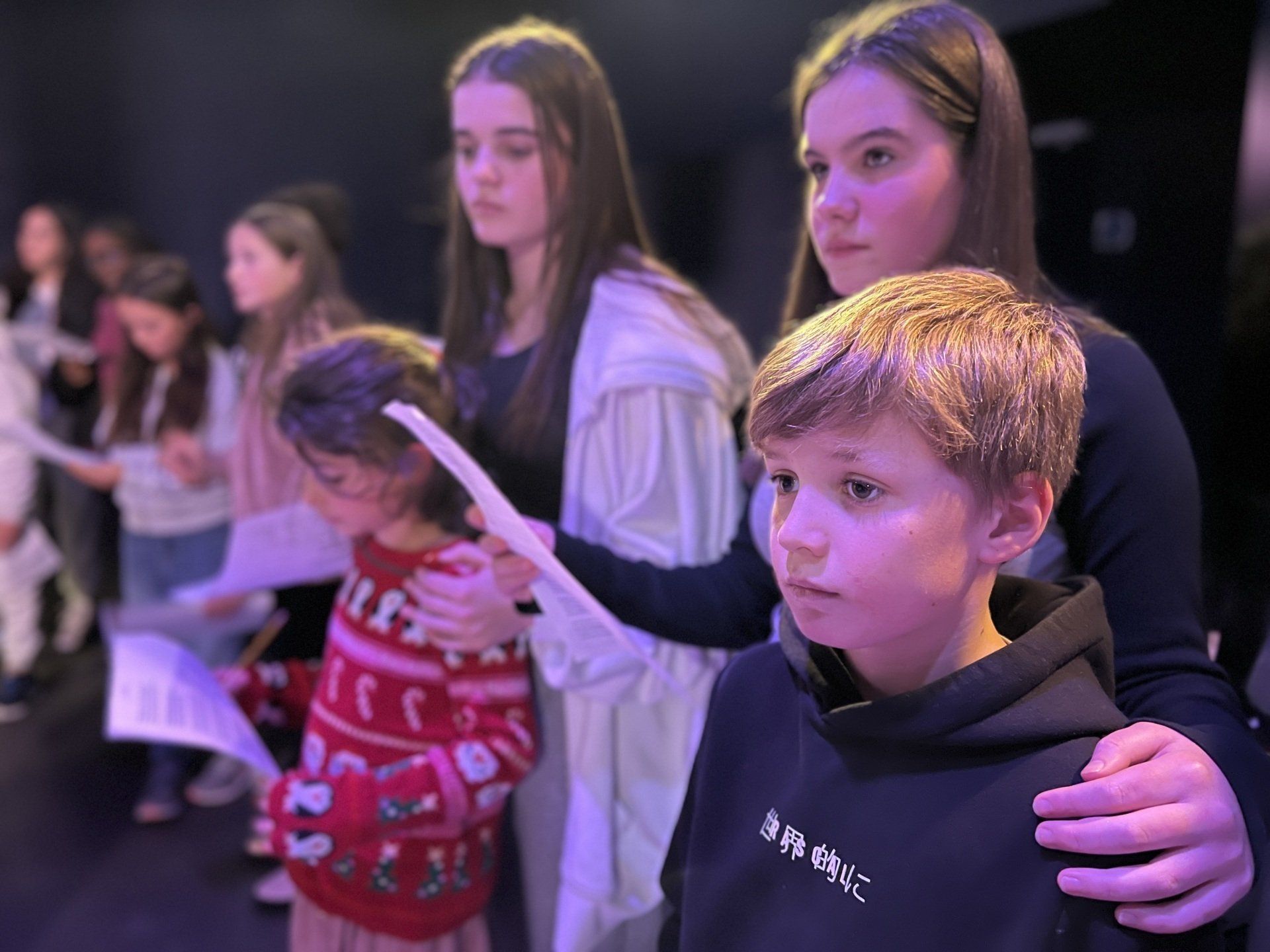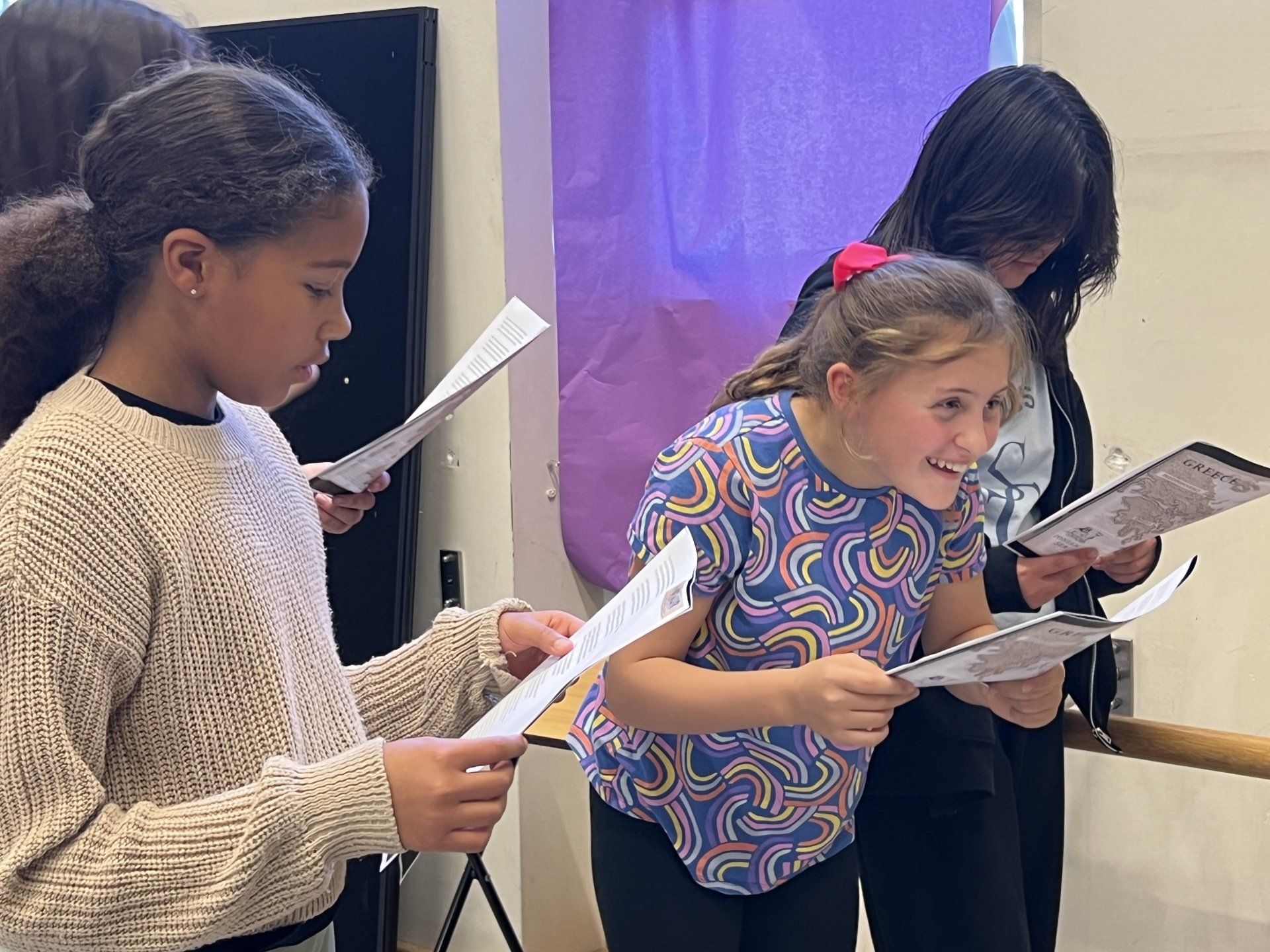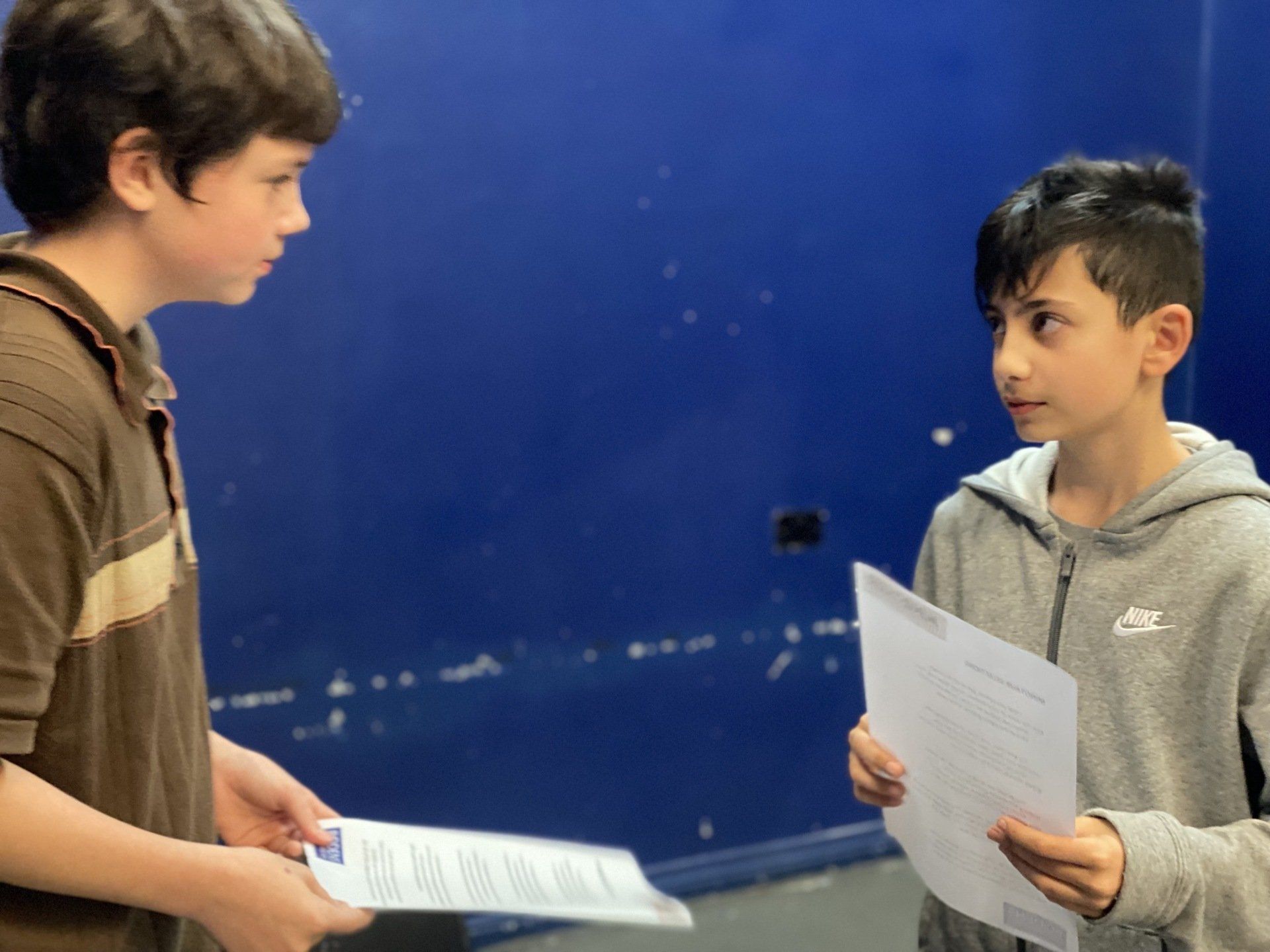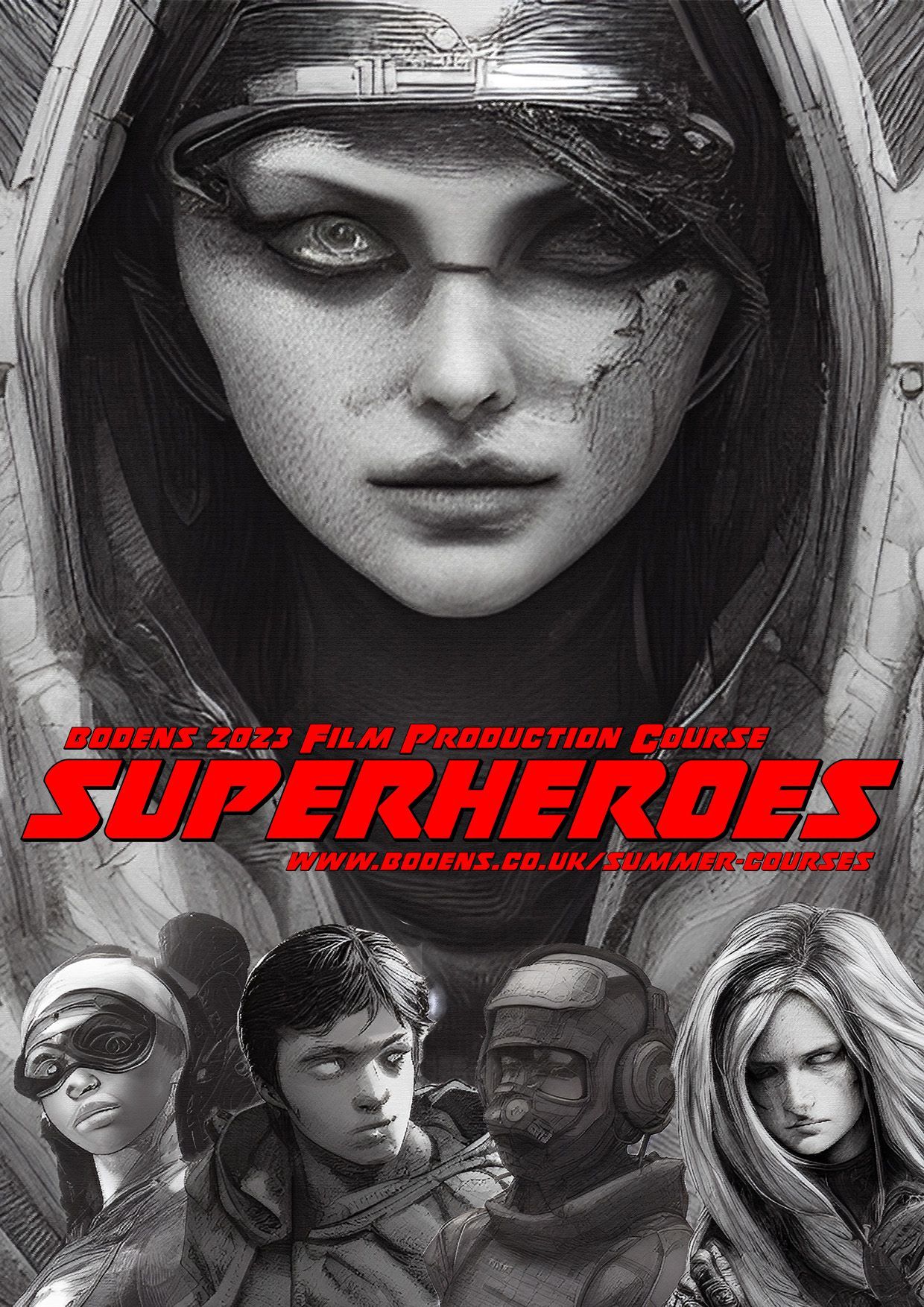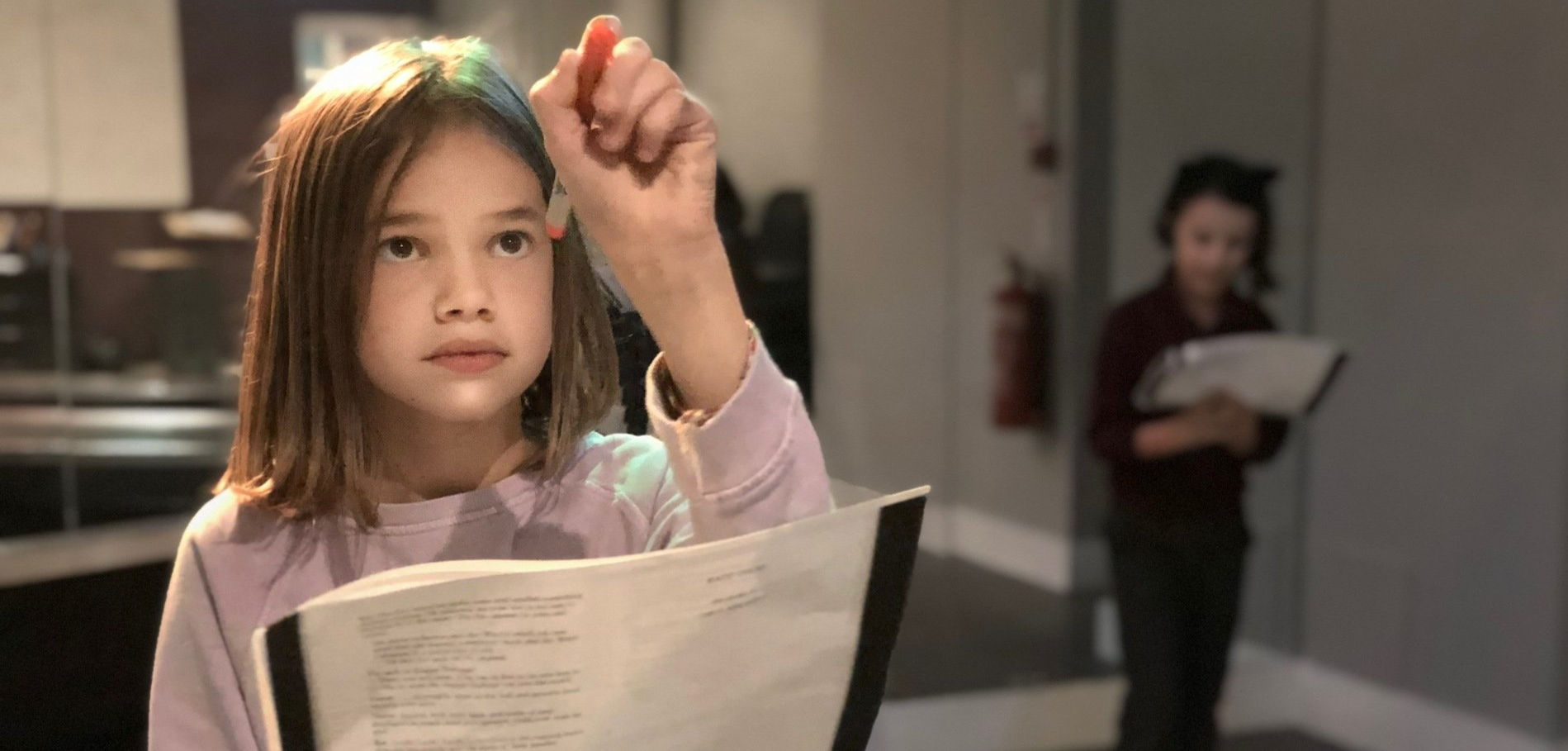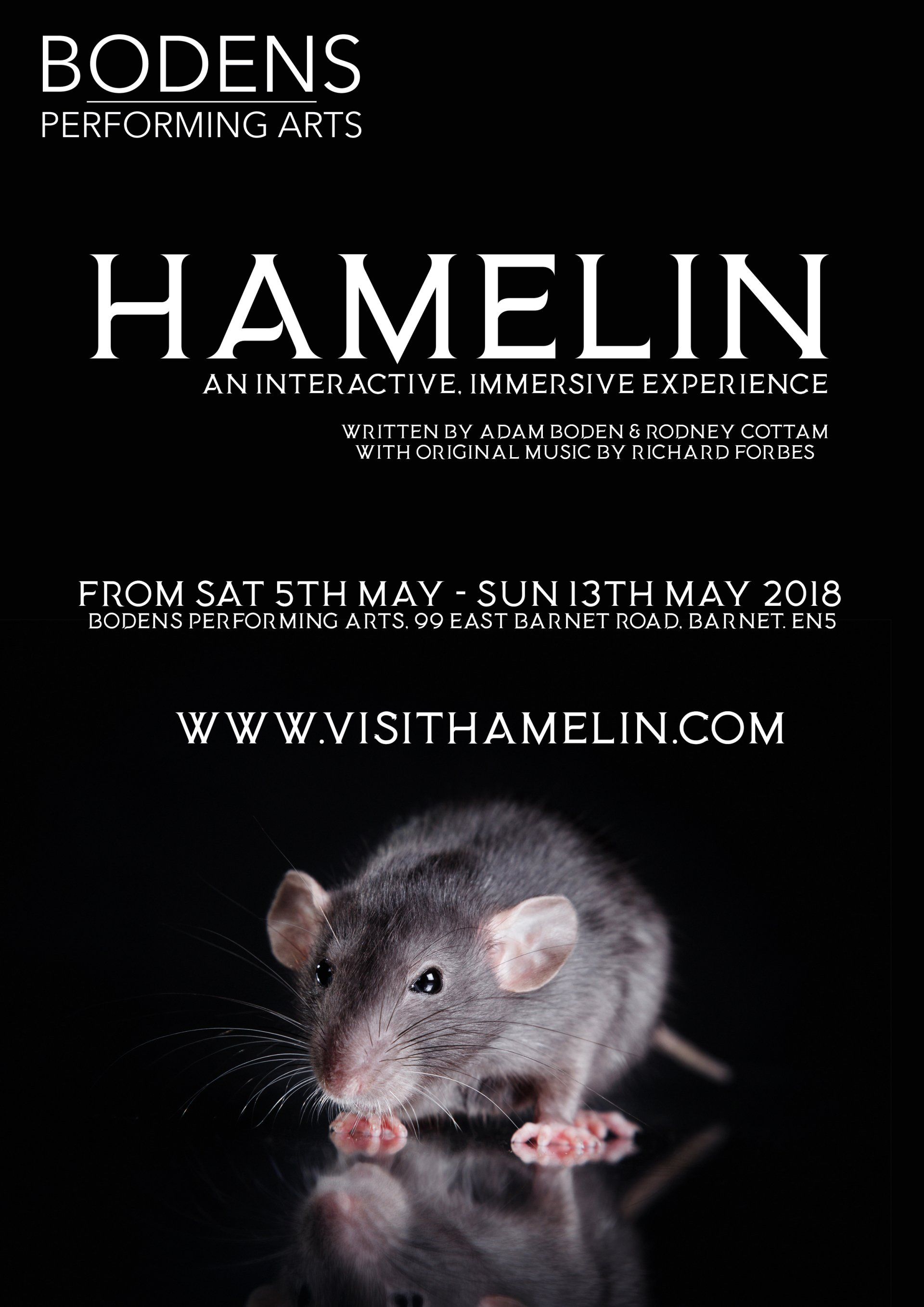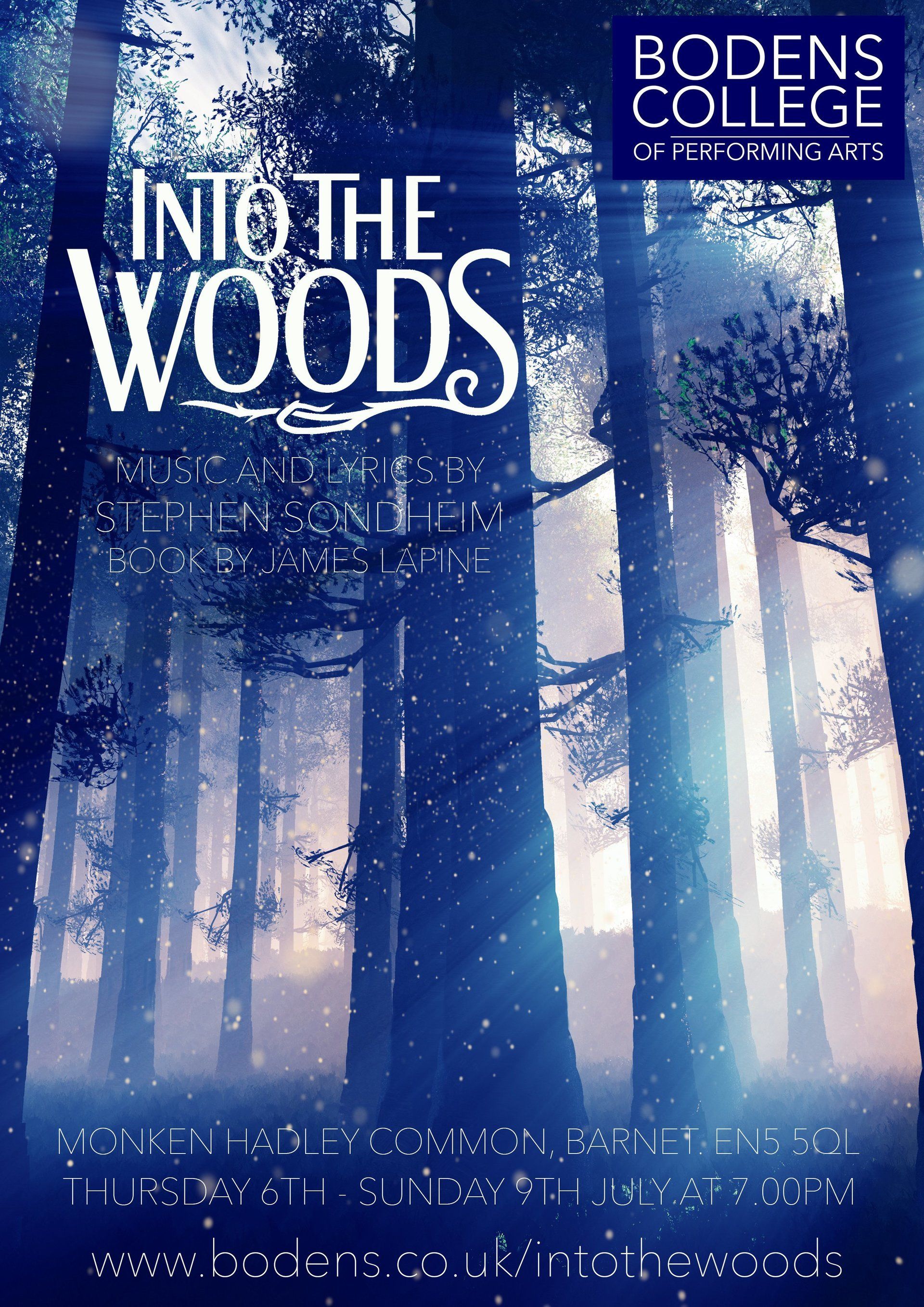Through the Labyrinth
The early stages of our new immersive, interactive, promenade performance of Minotaur, based on Plutarch's Theseus.
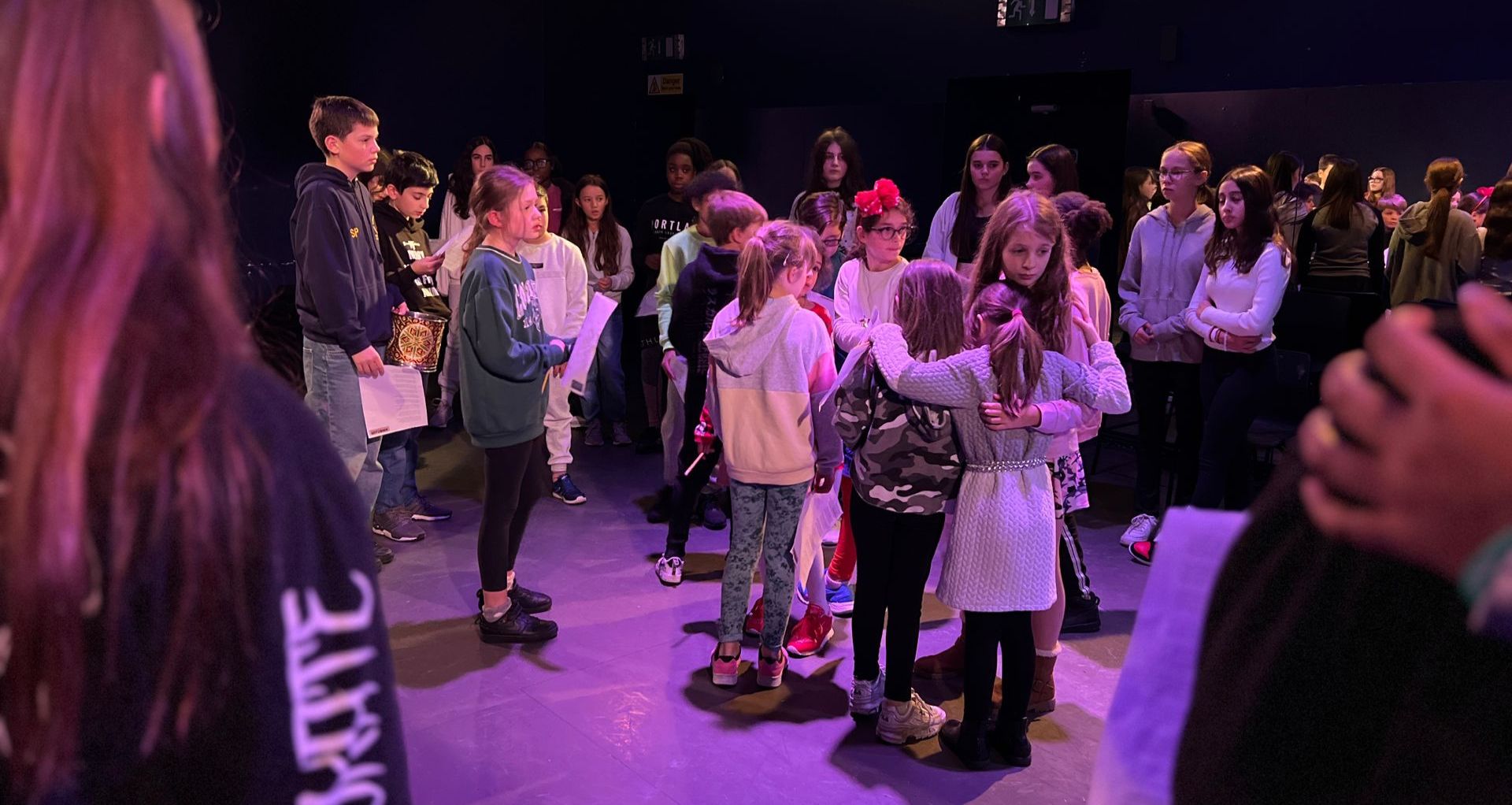
Creating an ancient world for an audience to wander around in is a challenge in itself. Add one hundred young people whose education, enjoyment and experience you have to worry about, an ocean crossing, a giant maze and a minotaur... you might well have a problem. It takes planning, imagination, resources and talent - and if you want to involve the young people throughout the entire creative process, it also takes time.
For those unfamiliar with the terms immersive, interactive or promenade, there's some information below.
In our first term, we began to unpick the story of Theseus and the Minotaur. We used media, literature and storytelling workshops to unlock the words and themes of this ancient Grecian story. Students recorded their thoughts and feelings; what stood out to them, what resonated with or unsettled them. While our intention is to set the story against the backdrop of Ancient Greece, we can't help but consider the story in our contemporary world. When Theseus breaks his promise to marry Ariadne for her help against the Minotaur, many of our young people wondered who the hero was after all. When you are collaborating with your cast, moving forward, this has to be at the forefront of our considerations. This is when the story ceases being Plutarch's, and starts to become theirs.
With any immersive theatre, a crucial decision to be made is how to bring your audience into the world of the play. With a story like Theseus, you have the added problem of history. How do you ensure your audience understand the world of the play and what has happened previously, before they begin to watch a story unfold within it? We have created the Museum of Athens where the audience will begin their journey under the watchful gaze of one of our tour guides: Aphrodite, Hermes, Apollo or Athena. Alongside ancient artefacts that the audience will later see in their original life, young performers will appear as animated history in our interactive exhibitions.
A promenade performance works by rotating some of the scenes. As the audience move from location to location in smaller groups, actors repeat sections so that everyone sees as much of the action as possible. At points during the piece (the marketplace, banquet and boat) the audience come together and experience the story as a whole. This requires the actors to have the ability to improvise either side of the scripted scenes, within the world of the play. Students spent a term working on their improvisation techniques in preparation for anything that might happen in a production like this. Improvisation is also a very important part of devising characters and story. When we are forced to generate ideas in the moment, we are more likely to create something new or different, that we wouldn't necessarily have put forward if we were sat discussing ideas around a table.
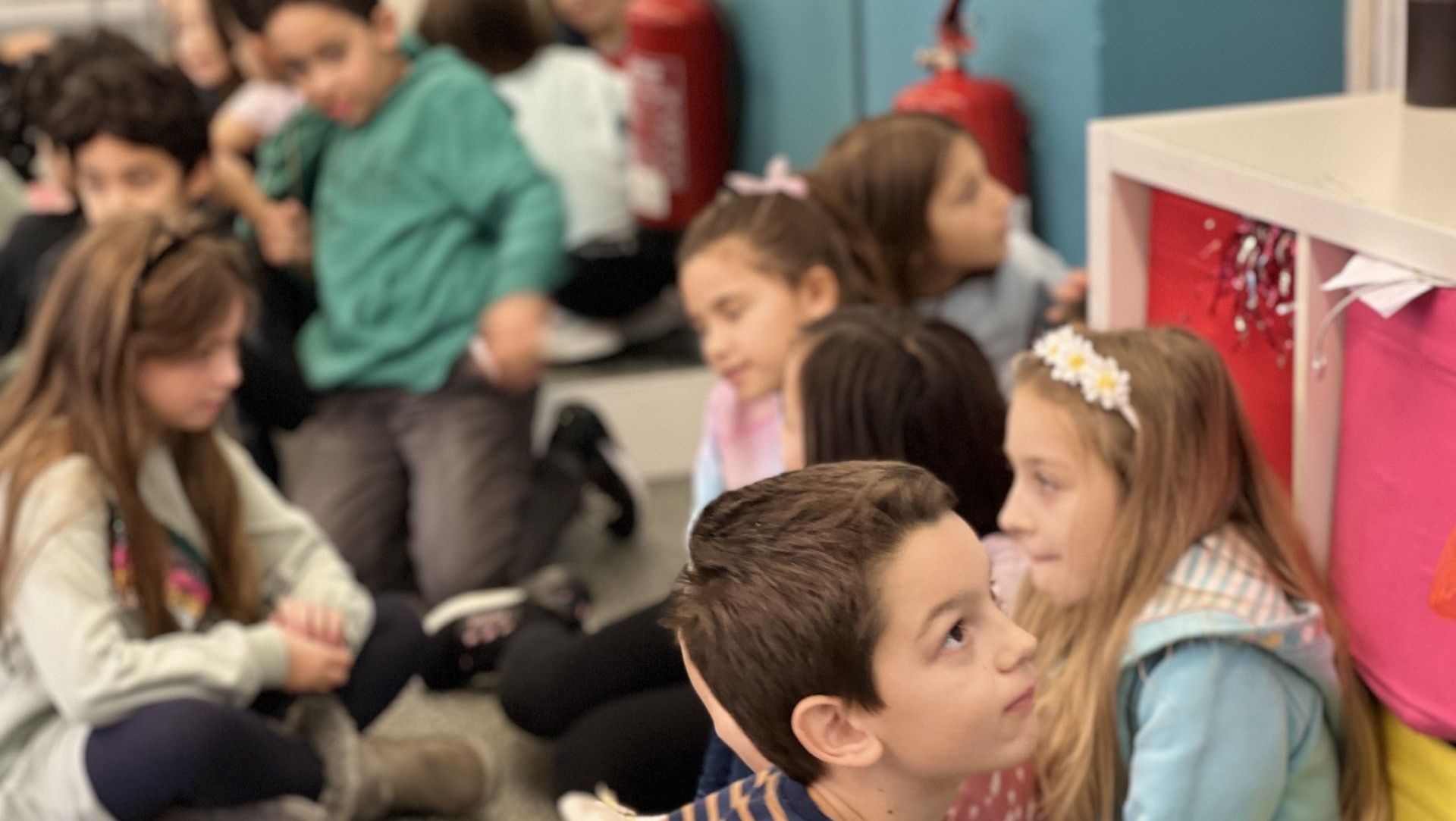
Having chosen the parts of the story to be included, we started the process of creating a script. In this challenging production the text is being written in different forms of verse. For example, the Athenians speak in Iambic Pentameter, similar to much of Shakespeare's verse. The cast have worked on finding the rhythm and poetry of the text, while trying to maintain the storytelling, or communication between the characters.
So as the setting sun softens her stare
Hides behind the earth like a glide downstairs
The dark of night fall shadows anxious air
And silence shrouds the Athens market square
Still you can hear the memory of the war
The dread and fear of what has come before
So long ago the Cretian prince was killed
Yet still the blood of innocents is spilled.
Every ninth year the names must be revealed
And for the chosen children fate is sealed
The people stand together, but alone.
Soon some will suffer heartbreak in their homes.
A booming voice, then the silence smothered
Breath held tight, a loved one clasps another
‘The time has come to read the names aloud!’
Waves of sorrow flood the frightened crowd.
So now we move onto the audition and casting process. Every single participant needs to play an actual part, with an emotional journey and an impact on the story. This term we have already begun the process of characterisation, considering the physical tension, openness, height and eye contact of the character, before working on the voice. Then we shall return to the finished script and make sure we end the penultimate term before the show ready to move into the final stages of rehearsals.
So the last remaining question... to make it a musical, or not a musical...

